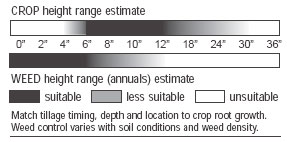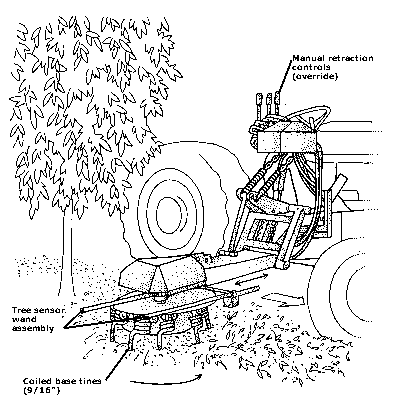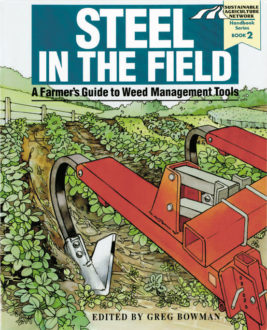Horticultural Crops
Retracting Tree Weeder

Overview: These units use passive tooling or active tiller heads to cultivate between trees or staked vines. As the implement moves along the row, the tool retracts into the row-middle area as a sensor contacts the tree or stake. Some makers offer one or more fixed-position shank mountings for sweeps, shovels, subsoilers or barring-off disks close to the moving head. Others design rugged tool carriers compatible with the moving part.
Design Features: In automatic units, a hydraulic sensing arm contact triggers the retraction, with the tool moving back into the row when the obstruction has been passed. These units are usually mounted onto the right side motor block or rear three-point hitch. Manually controlled units allow for more varied control. An alternative pivoting version can be front-, side-, or rear-mounted or attached to the side of a between-the-row toolbar cultivator.

Options: Self-contained hydraulic systems power active tillage heads. On-the-go tilt control gives operator more control in variable orchard conditions. Rear-mount, three-point hitch wrap-forward units place the head within the view of the operator, similar to the side-mount unit shown here.
Model for comparison: rotary tillage head with coiled-base vertical tines
Rec. PTO HP: 18 (with auxiliary hydraulic power) and up; 30 to 80 for PTO drive
Speed: 1.5 to 4 mph
List price: $2,000 (pull along); $5,000 to $8,000 (tractor attachment)
Sources: 11, 34, 42, 51, 80, 82
